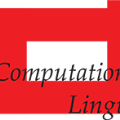To consider Hawrami and Zaza (Zazaki) standalone languages or dialects of a language have been discussed and debated for a while among linguists active in studying Iranian languages. The question of whether those languages/dialects belong to the Kurdish language or if they are independent descendants of Iranian languages was answered by MacKenzie (1961). However, a majority of people who speak the dialects are against that answer. Their disapproval mainly seems to be based on the sociological, cultural, and historical relationship among the speakers of the dialects. While the case of Hawrami and Zaza has remained unexplored and under-examined, an almost unanimous agreement exists about the classification of Kurmanji and Sorani as Kurdish dialects. The related studies to address the mentioned cases are primarily qualitative. However, computational linguistics could approach the question from a quantitative perspective. In this research, we look into three questions from a linguistic distance point of view. First, how similar or dissimilar Hawrami and Zaza are, considering no common geographical coexistence between the two. Second, what about Kurmanji and Sorani that have geographical overlap. Finally, what is the distance among all these dialects, pair by pair? We base our computation on phonetic presentations of these dialects (languages), and we calculate various linguistic distances among the pairs. We analyze the data and discuss the results to conclude.
翻译:研究一种语言的独立语言或方言(zazaki)(Zazaki)的问题由MacKenzie(1961年)回答。然而,大多数说这种方言的人反对这种答案,他们反对主要基于方言使用者之间的社会学、文化和历史关系。虽然在研究伊朗语言的语文专家中,Hawrami和Zaza的情况一直没有得到探讨和研究不足,但关于将Kurmanji和Sorani归类为库尔德语的几乎一致的协议存在,解决上述案例的相关研究主要是定性的。然而,计算语言可以从数量角度来处理这个问题。我们从语言的距离的角度研究三个问题。首先,讲这种方言的人和Zaza之间如何相似或不同,考虑到这两种语言之间没有共同的地理共存。第二,关于Kurmanji和Sorani的地理距离是多少?最后,我们这些方言的计算结果和我们这些方言的计算都是这些方言之间的数字。最后,我们用这些方言的计算结果,我们用不同方言的计算是这些方言的计算。




